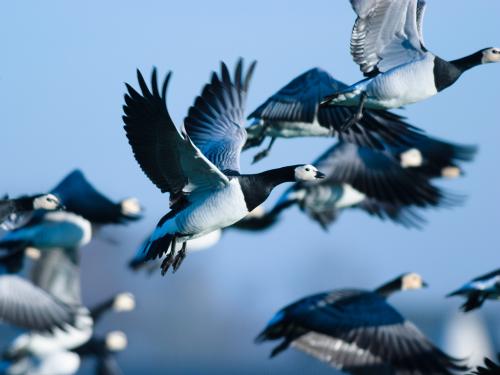The Bird Migration
The bird migration. Perhaps one of the most fascinating phenomena in our nature. Every year, billions of birds travel across the earth from their wintering grounds to their breeding areas. And back again.
The bird migration. Perhaps one of the most fascinating phenomena in our nature. Every year, billions of birds travel across the earth from their wintering grounds to their breeding areas. And back again.
They fly hundreds of kilometers at a stretch and face many dangers along the way. Bad weather and birds of prey are natural dangers. But humans can also be dangerous because, for example, they hunt. In addition, more and more areas where birds can rest and eat to regain strength are disappearing. People build houses or remove trees and bushes to use the area differently. It's quite a challenge to survive the journey. All these dangers combined result in some of the birds dying and therefore not returning.

Most birds prefer to migrate over land. There is nothing for them to gain on the open sea. At the border of water and land, many species find a lot of food. The main migration routes therefore concentrate along the coasts of the continents. And the Netherlands is located right at an important crossroads, in the middle of the East Atlantic migration route. Precisely along the border of water and land lies a number of national parks. These parks along the Dutch coast are "safe havens" for these long-distance flyers. During migration, birds find their ideal resting place here. Each year, more than 90 million migratory birds pass through our country. That is over three hundred different species.
To survive the journey, migratory birds rely on having enough safe and food-rich roadside stops along the way. This allows them to continue their travel with a full stomach. The combination of inland natural areas and the outer dike salt marshes, mudflats, and sandbanks in the Netherlands provides space, tranquility, and food. The migratory birds can take a breather here, overwinter, or stay to lay eggs and raise chicks.
On and around World Migratory Bird Day, various national parks pay attention to this special phenomenon. World Migratory Bird Day is held twice a year, both on the second Saturday in May and the second Saturday in October.
The next World Migratory Bird Day will take place on Saturday, October 11. As soon as activities are known, you can find them on this page.